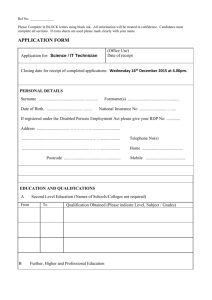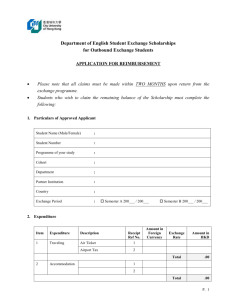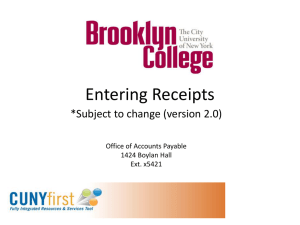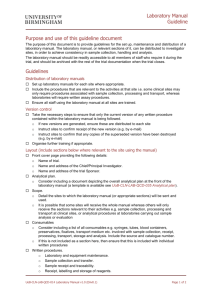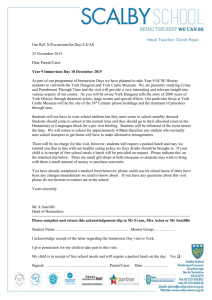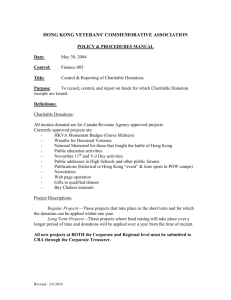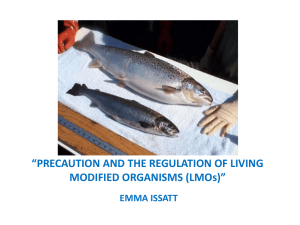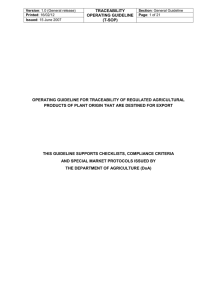UoB-CLN-LAB-QCD-007 Receipt and traceability of trial
advertisement
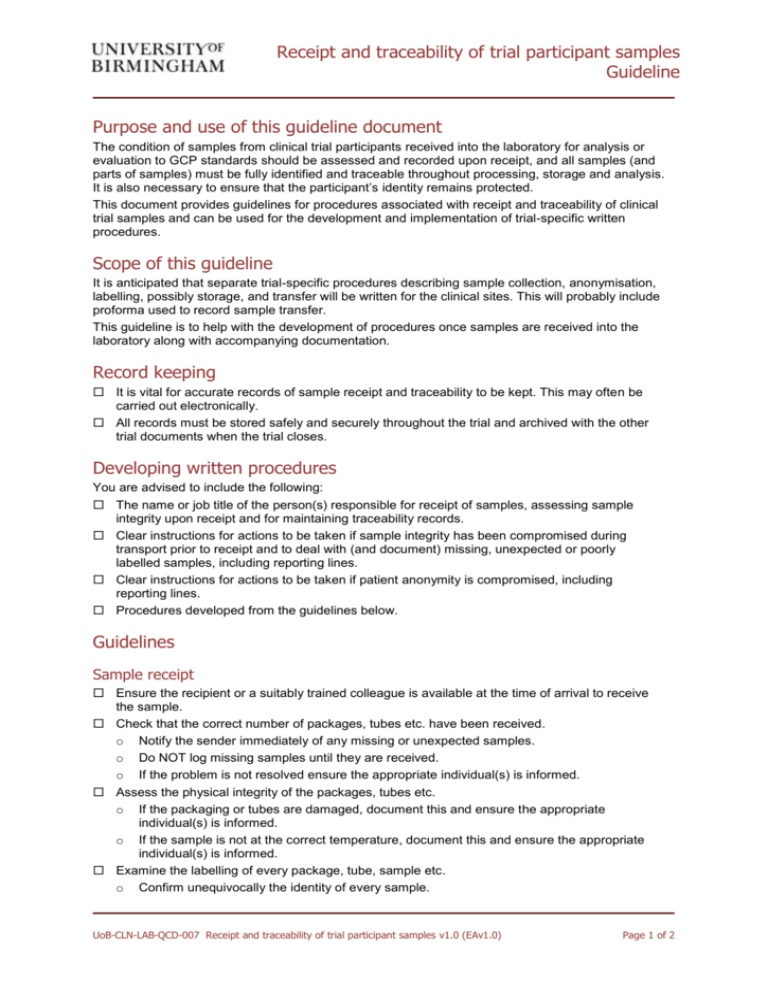
Receipt and traceability of trial participant samples Guideline Purpose and use of this guideline document The condition of samples from clinical trial participants received into the laboratory for analysis or evaluation to GCP standards should be assessed and recorded upon receipt, and all samples (and parts of samples) must be fully identified and traceable throughout processing, storage and analysis. It is also necessary to ensure that the participant’s identity remains protected. This document provides guidelines for procedures associated with receipt and traceability of clinical trial samples and can be used for the development and implementation of trial-specific written procedures. Scope of this guideline It is anticipated that separate trial-specific procedures describing sample collection, anonymisation, labelling, possibly storage, and transfer will be written for the clinical sites. This will probably include proforma used to record sample transfer. This guideline is to help with the development of procedures once samples are received into the laboratory along with accompanying documentation. Record keeping It is vital for accurate records of sample receipt and traceability to be kept. This may often be carried out electronically. All records must be stored safely and securely throughout the trial and archived with the other trial documents when the trial closes. Developing written procedures You are advised to include the following: The name or job title of the person(s) responsible for receipt of samples, assessing sample integrity upon receipt and for maintaining traceability records. Clear instructions for actions to be taken if sample integrity has been compromised during transport prior to receipt and to deal with (and document) missing, unexpected or poorly labelled samples, including reporting lines. Clear instructions for actions to be taken if patient anonymity is compromised, including reporting lines. Procedures developed from the guidelines below. Guidelines Sample receipt Ensure the recipient or a suitably trained colleague is available at the time of arrival to receive the sample. Check that the correct number of packages, tubes etc. have been received. o Notify the sender immediately of any missing or unexpected samples. o Do NOT log missing samples until they are received. o If the problem is not resolved ensure the appropriate individual(s) is informed. Assess the physical integrity of the packages, tubes etc. o If the packaging or tubes are damaged, document this and ensure the appropriate individual(s) is informed. o If the sample is not at the correct temperature, document this and ensure the appropriate individual(s) is informed. Examine the labelling of every package, tube, sample etc. o Confirm unequivocally the identity of every sample. UoB-CLN-LAB-QCD-007 Receipt and traceability of trial participant samples v1.0 (EAv1.0) Page 1 of 2 Receipt and traceability of trial participant samples Guideline o Check that the label does not display information which may identify the trial subject. If information is recorded on the label which may compromise the trial subject’s right to privacy ensure trial-specific procedures are followed (e.g. masking, deleting) and the appropriate individual(s) is informed. o Ensure that missing, unexpected or poorly labelled samples are documented, and inform the appropriate individual(s) if issues are not easily resolved. Consider the development and implementation of procedures for confirming safe receipt of the correct samples with the clinical site. Confirm the completeness of any accompanying information and file any documents supplied by the sender with the trial records. Sample traceability Each sample received must be appropriately and uniquely identified. It is expected that samples will have been anonymised and labelled at the clinical site prior to transfer according to separate trial-specific procedures and this will represent a unique identifier. When the sample is received into the laboratory the original unique identifier can be used, or a separate labelling system can be employed. Either way, a uniquely identified sample must be linked unequivocally to a full description of the sample and this should be recorded. Further processing of the sample may generate sample derivatives or aliquots and these too should be uniquely identified and linked unequivocally to the original sample. You may wish to consider the use of suffixes such as A, B, C to denote aliquots or derivatives of the same original sample. Keep records of where all samples are stored. Storage conditions will be as defined and documented in trial-specific procedures. Physically separate samples from different trials to avoid potential mix-ups and cross contamination. Implement and maintain a robust mechanism to track and record the movement of each sample, and part of a sample, from arrival to analysis. Related documents UoB-CLN-LAB-SOP-001 Procedures for GCP compliance in the laboratory UoB-CLN-LAB-QCD-007 Receipt and traceability of trial participant samples v1.0 (EAv1.0) Page 2 of 2
